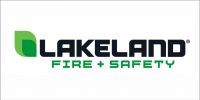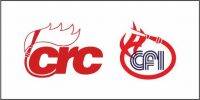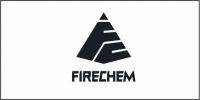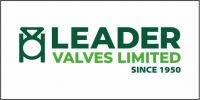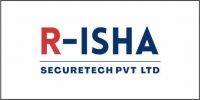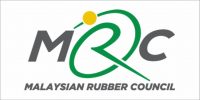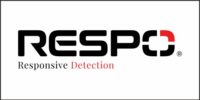 The future of small Unmanned Aerial Systems (UAS), often referred to as drones, is poised for significant advancements across various industries. As technology evolves, small UAS are becoming more efficient, affordable, and capable, opening up a range of possibilities from commercial applications to personal use. However, realizing the full potential of these systems requires overcoming challenges related to regulatory frameworks, technology development, security, and public acceptance. In this article, we explore key aspects that will enable the future of small UAS, driving innovation, and fostering safe and responsible use.
The future of small Unmanned Aerial Systems (UAS), often referred to as drones, is poised for significant advancements across various industries. As technology evolves, small UAS are becoming more efficient, affordable, and capable, opening up a range of possibilities from commercial applications to personal use. However, realizing the full potential of these systems requires overcoming challenges related to regulatory frameworks, technology development, security, and public acceptance. In this article, we explore key aspects that will enable the future of small UAS, driving innovation, and fostering safe and responsible use.
- Technological Advancements
Small UAS are already transforming industries such as logistics, agriculture, surveillance, and media, but the next frontier will be defined by technological advancements that enhance their performance and broaden their use cases.
Key Enablers:
Autonomous Flight: Advances in AI and machine learning are allowing small UAS to navigate complex environments autonomously. By improving real-time decision-making and adaptive control systems, these drones will be able to operate without human intervention in diverse and challenging environments.
Battery Life and Power Efficiency: Longer battery life is a critical area of improvement. Innovations in battery technology, such as solid-state batteries or energy harvesting methods, will enable small UAS to fly longer distances, stay airborne for extended periods, and cover larger areas for various applications.
Miniaturization of Sensors and Payloads: As sensors and payloads continue to shrink in size while increasing in capability, small UAS will be able to perform more complex tasks with minimal weight or energy consumption. This includes everything from high-definition cameras for surveillance to specialized sensors for environmental monitoring.
Swarming Technology: The development of multi-UAS systems, or “drone swarms,” will enable coordinated flights of multiple drones, working together autonomously to perform tasks more efficiently. This technology has vast applications in search and rescue, disaster response, and large-scale data collection.
- Regulatory Frameworks and Policy Development
One of the key factors that will enable the future of small UAS is the establishment of clear, comprehensive, and flexible regulatory frameworks. Regulations that balance innovation with safety concerns are crucial to fostering widespread adoption while mitigating risks to public safety.
Key Enablers:
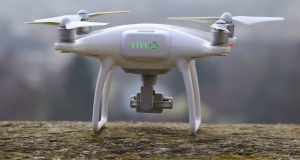 Airspace Integration: As the volume of UAS traffic grows, integrating small UAS into existing airspace systems without compromising safety will be a critical challenge. Regulatory bodies such as the FAA (Federal Aviation Administration) and EASA (European Union Aviation Safety Agency) are already working on defining standards for airspace management, including the development of Unmanned Traffic Management (UTM) systems to ensure safe operations. Remote Identification and Tracking: The introduction of remote identification systems, which will allow authorities to track and identify drones in real-time, will be essential for maintaining security and preventing misuse. This will help address privacy and safety concerns and enable UAS operations in more urban and populated areas.
Airspace Integration: As the volume of UAS traffic grows, integrating small UAS into existing airspace systems without compromising safety will be a critical challenge. Regulatory bodies such as the FAA (Federal Aviation Administration) and EASA (European Union Aviation Safety Agency) are already working on defining standards for airspace management, including the development of Unmanned Traffic Management (UTM) systems to ensure safe operations. Remote Identification and Tracking: The introduction of remote identification systems, which will allow authorities to track and identify drones in real-time, will be essential for maintaining security and preventing misuse. This will help address privacy and safety concerns and enable UAS operations in more urban and populated areas.
Evolving Privacy and Security Laws: As small UAS are used for more commercial and personal purposes, establishing clear guidelines around privacy rights and security protocols will be critical. Policies addressing data protection, surveillance concerns, and cybersecurity for drones will ensure responsible and ethical usage.
- Security and Risk Mitigation
As small UAS proliferate, they become increasingly attractive targets for malicious activities, including hacking, hijacking, and misuse for illegal purposes. Ensuring the security of both the UAS and their operators is vital for building trust in these systems and enabling their continued growth.
Key Enablers:
Cybersecurity: Small UAS rely on wireless communication, which can be susceptible to hacking attempts or jamming. Advanced encryption, secure communication protocols, and anti-tampering technology are essential for protecting both control systems and data integrity.
Geofencing and Safe Zones: Geofencing technology can be used to create virtual boundaries that prevent drones from entering restricted areas, such as airports, government buildings, or private property. This prevents accidents and ensures compliance with regulatory requirements.
Redundant Systems for Safety: Ensuring the operational safety of small UAS requires redundant systems that can take over in case of failure. This includes backup communication systems, power sources, and emergency landing protocols to prevent crashes or unsafe landings.
- Public Awareness and Acceptance
The successful integration of small UAS into society depends largely on public perception and acceptance. For widespread use, especially in urban areas, the public must trust that drones are safe, secure, and beneficial to the community.
Key Enablers:
Public Education Campaigns: Governments, regulators, and industry stakeholders must engage in proactive efforts to educate the public about the benefits, safety features, and regulations surrounding small UAS.
Transparency in operations and addressing privacy concerns will help improve public confidence in drone technology.
Community Engagement: In areas where drones are deployed for surveillance or delivery, engaging with local communities to address concerns and establish clear guidelines is essential. Open dialogue with residents and businesses can help mitigate opposition and foster cooperation.
- Innovative Use Cases and Industry Adoption
Small UAS are already making waves in industries such as e-commerce, agriculture, and logistics, but the potential applications for these systems are vast and continue to expand.
Key Enablers:
Last-Mile Delivery: One of the most anticipated applications for small UAS is in the field of last-mile delivery. With advancements in payload capacity and navigation systems, small drones are expected to revolutionize e-commerce by providing fast, cost-effective, and eco-friendly delivery solutions. Major companies like Amazon and UPS are already piloting drone delivery systems, aiming to reduce delivery times and traffic congestion.
Precision Agriculture: Small UAS are already transforming agriculture by providing real-time aerial imagery and monitoring crop health, moisture levels, and pest infestations. As these drones become more advanced and equipped with multispectral sensors, they will enable farmers to optimize crop yields, reduce waste, and manage resources more efficiently.
Infrastructure Inspection: Small UAS are increasingly used for inspecting critical infrastructure, such as power lines, bridges, and oil rigs. These systems reduce the need for manual inspections in hazardous environments, providing a safer, more efficient alternative for regular maintenance and monitoring.
- Collaboration Across Stakeholders
The future of small UAS will be shaped by collaboration between various stakeholders, including regulatory bodies, manufacturers, software developers, and end-users. By working together, these groups can create an ecosystem that drives the evolution of drone technology while ensuring safe and ethical practices.
Key Enablers:
Standardization of Technologies: Developing common standards for hardware, software, and operational protocols will help ensure that small UAS from different manufacturers can operate seamlessly in shared environments. Industry consortia and trade associations are already working on defining standards for interoperability.
Public-Private Partnerships: Governments, regulators, and industry leaders must collaborate to define regulatory policies, develop secure airspace management systems, and create new business opportunities for drone operators. Partnerships with tech companies will accelerate the development of advanced UAS technologies and ensure their safe deployment at scale.
Conclusion
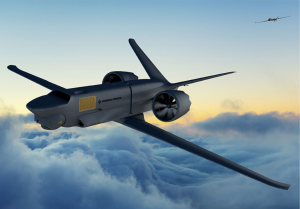 The future of small Unmanned Aerial Systems (UAS) is bright, with innovations in technology, regulatory frameworks, security protocols, and public acceptance all playing a pivotal role in their growth. The continuous development of autonomous systems, enhanced sensors, and communication technologies will unlock new opportunities across a range of industries. However, the successful realization of this potential hinges on a collaborative approach that balances innovation with safety, security, and public trust. By addressing challenges in airspace integration, privacy concerns, and operational safety, small UAS can become an indispensable tool in modern society, driving progress and efficiency across multiple sectors.
The future of small Unmanned Aerial Systems (UAS) is bright, with innovations in technology, regulatory frameworks, security protocols, and public acceptance all playing a pivotal role in their growth. The continuous development of autonomous systems, enhanced sensors, and communication technologies will unlock new opportunities across a range of industries. However, the successful realization of this potential hinges on a collaborative approach that balances innovation with safety, security, and public trust. By addressing challenges in airspace integration, privacy concerns, and operational safety, small UAS can become an indispensable tool in modern society, driving progress and efficiency across multiple sectors.









